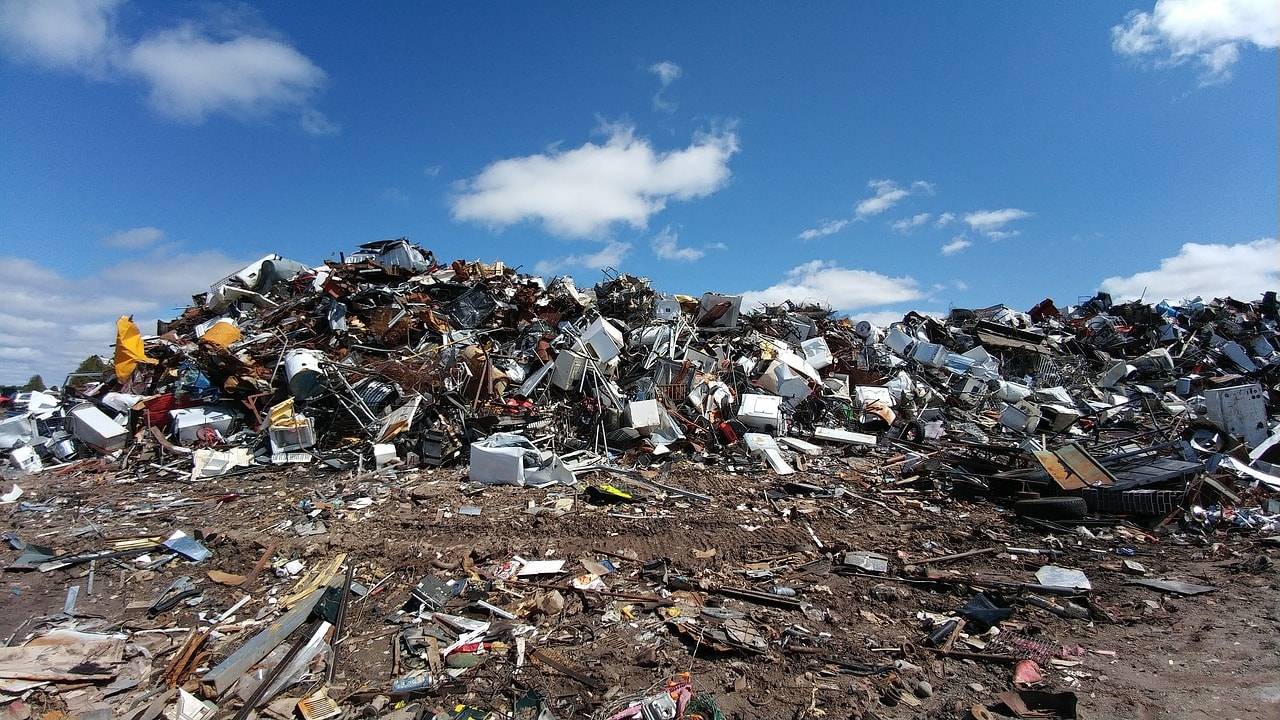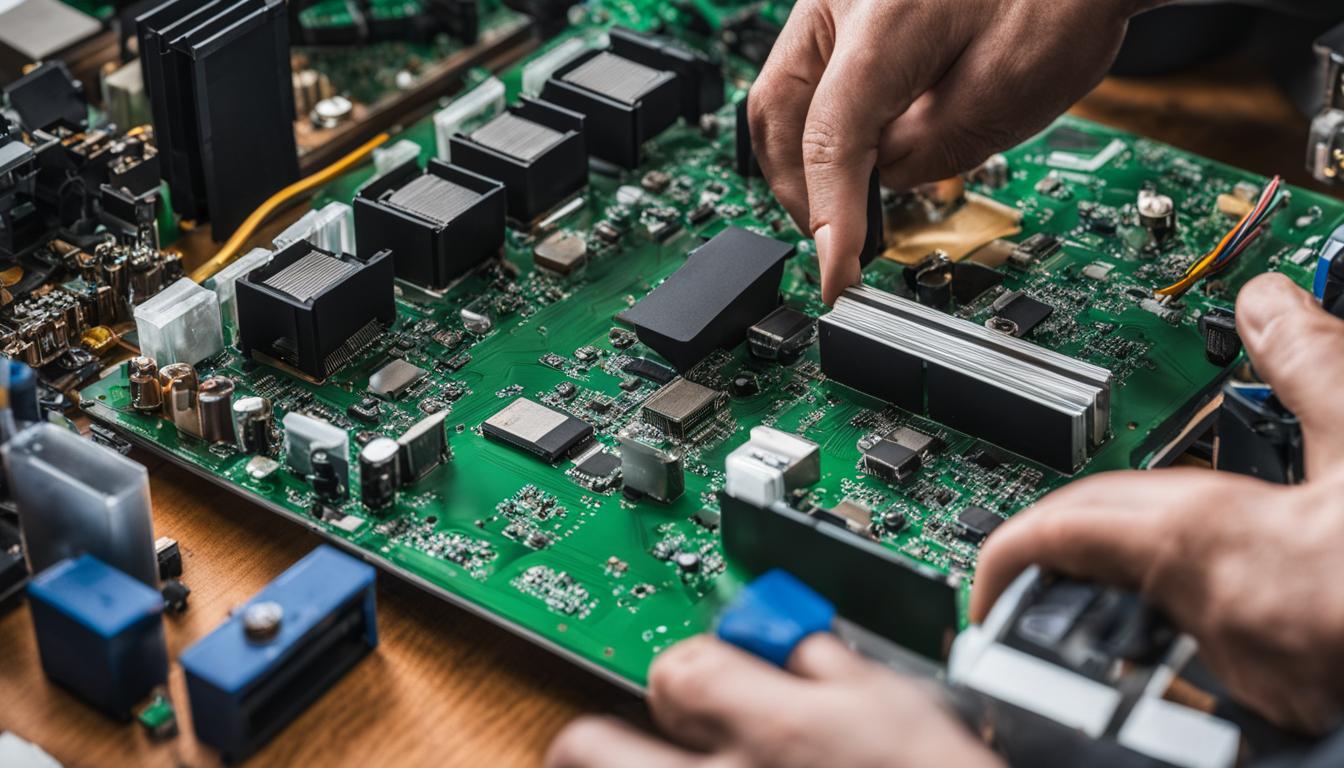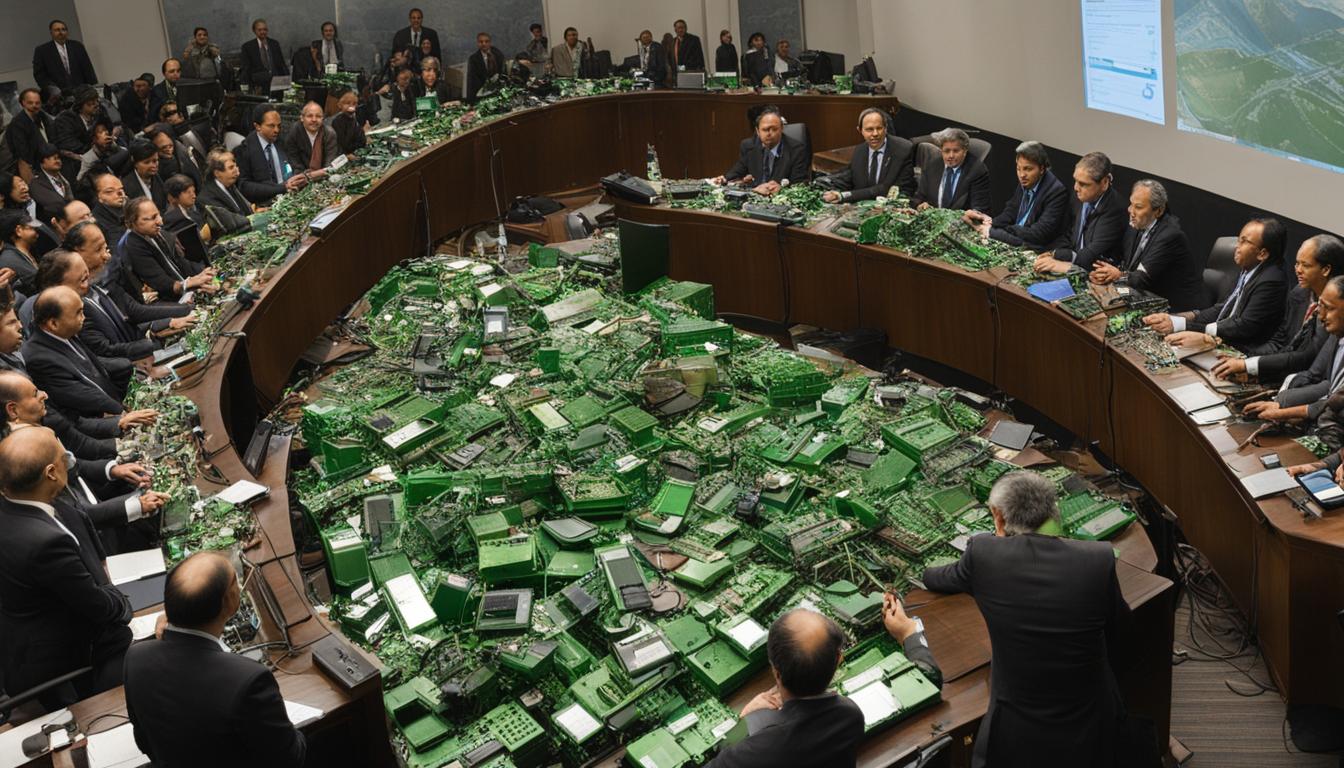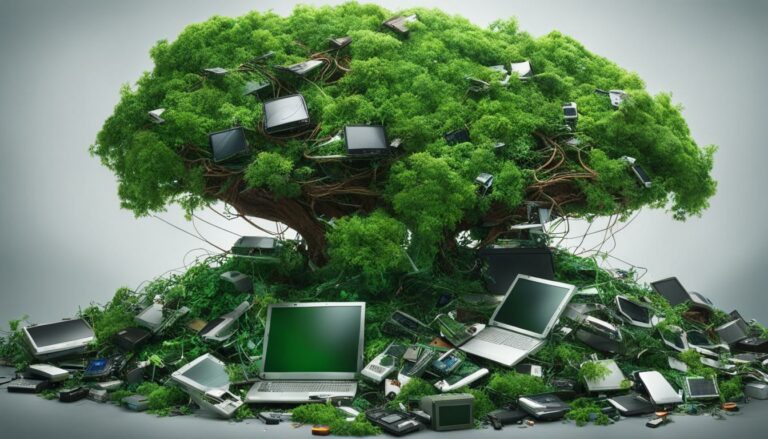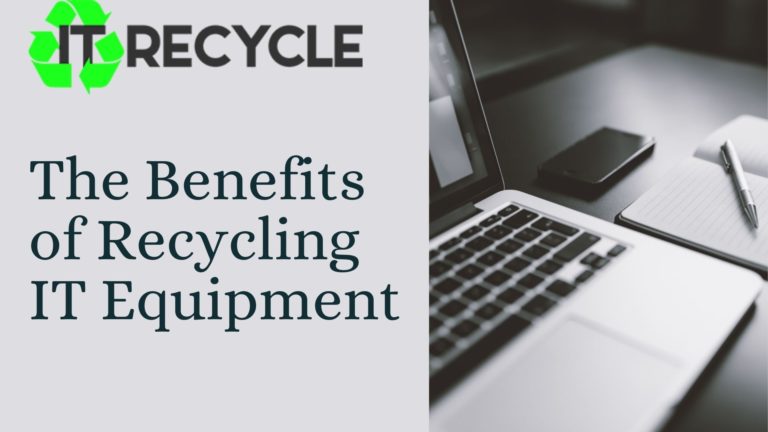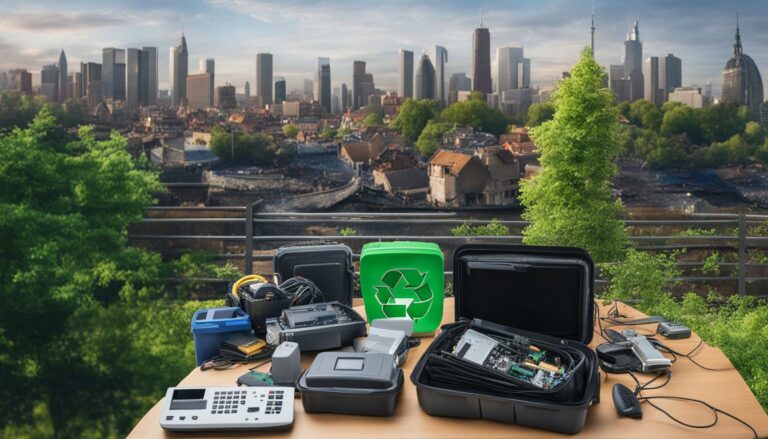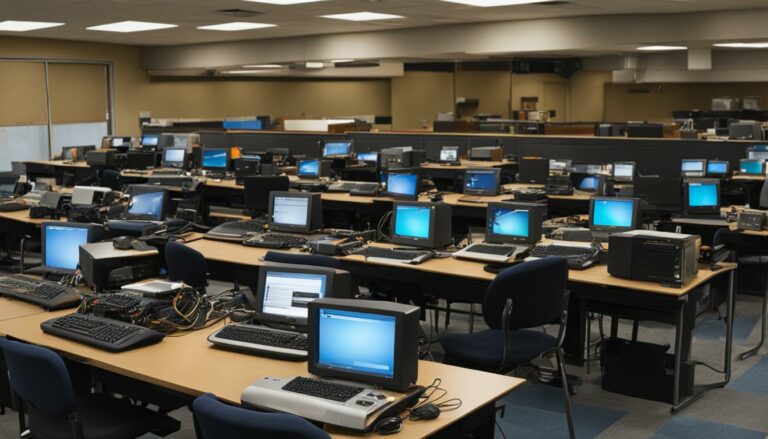Reducing Landfill Impact through IT Recycling.
The Environmental Cost of IT Waste in Landfills is a growing concern that demands immediate attention. As we continue to generate an increasing amount of electronic waste, the need for responsible disposal methods has never been more critical. This comprehensive guide aims to address this urgent issue by focusing on Reducing Landfill Impact through IT Recycling. From understanding government regulations to exploring technological innovations, this article will provide you with the knowledge and tools you need to make informed decisions about IT recycling.
The Environmental Cost of IT Waste in Landfills
Introduction to the Environmental Cost
The issue of IT waste in landfills is a growing environmental concern that has far-reaching implications. Beyond the obvious problem of occupying valuable land, the disposal of IT waste in landfills leads to a cascade of environmental issues, including soil and water contamination, air pollution, and impact on wildlife.
Soil Contamination: A Closer Look
When electronic devices such as computers, servers, and networking equipment are discarded in landfills, they often break down and release a variety of hazardous chemicals into the soil. Heavy metals like lead, mercury, and cadmium are particularly concerning. These metals are not biodegradable and can persist in the environment for years, leading to long-term soil degradation. This not only makes the land unsuitable for agriculture but also poses a risk to underground water reserves.
Water Pollution: The Ripple Effect
The chemicals leached from electronic waste don’t just stay in the soil; they also find their way into water bodies. This results in water pollution, which has a ripple effect on aquatic ecosystems. Fish and other aquatic life forms can ingest these toxic substances, leading to bioaccumulation and biomagnification. This poses a risk to human health when these contaminated fish are consumed.
Air Pollution: The Invisible Threat
The decomposition of organic matter in electronic waste can produce harmful gases, including methane, a potent greenhouse gas. Methane contributes significantly to climate change and global warming, making the issue of IT waste in landfills not just a local but a global concern.
Impact on Wildlife: The Silent Victims
The environmental degradation caused by IT waste in landfills also has a negative impact on wildlife. Animals that inhabit regions near landfills are at risk of ingesting contaminated water or food. This can lead to a range of health issues, including reproductive problems and even death.
The Human Element
It’s essential to recognize that these environmental impacts eventually circle back to affect human populations. Contaminated water supplies can lead to a host of health issues, including gastrointestinal diseases and various forms of cancer.
For a deeper understanding of the environmental risks associated with IT waste in landfills, you can read this article from the University of Colorado Boulder.
By comprehensively understanding the Environmental Cost of IT Waste in Landfills, we can better appreciate the urgent need for responsible IT recycling practices. This sets the stage for discussing government regulations, the role of recycling companies, and technological innovations in subsequent sections of this article.
Government Regulations and Policies: Guiding Responsible IT Recycling
Navigating the complex landscape of Government Regulations and Policies is crucial for ensuring responsible IT recycling. These laws and guidelines serve as a framework that dictates the proper disposal methods for electronic waste, thereby mitigating the Environmental Cost of IT Waste in Landfills.
Federal Laws and Guidelines
At the federal or national level, overarching laws often govern the disposal and recycling of electronic waste. For instance, in the United States, the Resource Conservation and Recovery Act (RCRA) is a key piece of legislation that regulates the disposal of hazardous waste, including electronic waste.
State and Local Regulations
Beyond federal laws, individual states and local governments frequently enact their own set of regulations. These can sometimes be more stringent than federal guidelines, imposing additional requirements on both businesses and individuals.
Industry-Specific Regulations
Certain sectors, such as healthcare and finance, are subject to industry-specific regulations due to the sensitive nature of the data they handle. Adherence to these guidelines is imperative to avoid legal repercussions and potential data breaches.
The Role of Certifications
Various certifications, such as e-Stewards or R2 (Responsible Recycling), are often endorsed or recognized by government bodies. These certifications serve as a seal of approval, indicating that a recycling company adheres to best practices in IT recycling.
Upcoming Changes and Amendments
Staying abreast of upcoming changes and amendments to regulations is essential. Governments continually update laws to adapt to new environmental research and technological advancements, making it crucial for businesses and individuals to stay informed.
UK-Specific Regulations: The WEEE Directive
In the United Kingdom, the Waste Electrical and Electronic Equipment (WEEE) Directive is the primary regulation governing the recycling and disposal of electronic waste. This directive places responsibility on producers and distributors to facilitate the collection and recycling of e-waste. It aims to reduce the amount of electronic waste ending up in landfills and promotes the recycling and reuse of materials.
By comprehensively understanding Government Regulations and Policies, individuals and businesses can ensure they are adhering to best practices in IT recycling. This not only helps protect the environment but also sets a standard for responsible behavior in the disposal of IT waste.
The Role of Recycling Companies: Ensuring Responsible IT Waste Management
When it comes to Reducing Landfill Impact through IT Recycling, the role of recycling companies cannot be overstated. These organizations serve as the intermediaries between electronic waste generators and the final disposal or recycling processes. Their practices can significantly influence the Environmental Cost of IT Waste in Landfills.
Importance of Certification
Choosing a recycling company with recognized certifications is crucial. Certifications like e-Stewards or R2 (Responsible Recycling) indicate that the company adheres to best practices and complies with Government Regulations and Policies.
Data Security
One of the primary concerns when recycling IT equipment is data security. A reputable recycling company will have protocols in place to securely wipe or destroy data, ensuring compliance with data protection laws.
Material Recovery and Reuse
Recycling companies are increasingly focusing on material recovery and reuse. This involves extracting valuable materials like metals from electronic waste for reuse, thereby reducing the need for virgin materials.
Eco-Friendly Disposal
For materials that cannot be recycled or reused, eco-friendly disposal methods are employed. This includes the safe disposal of hazardous materials in compliance with environmental regulations.
Transparency and Accountability
A responsible recycling company will offer transparency and accountability through detailed reporting and tracking, often enabled by technological solutions like blockchain.
For more information on the UK’s regulations governing IT recycling, you can refer to the WEEE Directive on the UK Government’s official website.
Technological Innovations in IT Recycling: Pioneering a Sustainable Future
In the quest for Reducing Landfill Impact through IT Recycling, technological innovations are emerging as game-changers. These advancements are not merely incremental improvements; they are revolutionizing the entire lifecycle of electronic waste management. From Machine Learning and Automation to Blockchain for Transparency, technology is setting new benchmarks for efficiency, accountability, and environmental sustainability.
Machine Learning and Automation: The Efficiency Game-Changer
Machine Learning and Automation are proving to be transformative in the field of IT recycling. Advanced algorithms can sift through enormous volumes of e-waste, categorizing materials with unprecedented accuracy. This automation not only accelerates the recycling process but also minimizes human error, leading to more effective material recovery.
Blockchain for Transparency: A Trustworthy Ecosystem
In an industry where accountability is paramount, Blockchain for Transparency offers a groundbreaking solution. By creating an immutable, transparent ledger of transactions, blockchain technology ensures that every stakeholder in the recycling chain can verify the responsible handling of materials. This adds a layer of trust and accountability that was previously difficult to achieve.
Internet of Things (IoT): Real-Time Monitoring and Decision-Making
The Internet of Things (IoT) is another technological innovation making waves in IT recycling. IoT devices can monitor the status of electronic items in real-time, providing invaluable data that informs environmentally friendly disposal methods. This real-time data can trigger immediate actions, such as rerouting items for refurbishment instead of disposal.
Virtual Reality (VR) and Augmented Reality (AR): Training for Excellence
Emerging technologies like Virtual Reality (VR) and Augmented Reality (AR) are being employed for training purposes in recycling facilities. These technologies simulate various scenarios, allowing workers to practice and master best practices in a risk-free virtual environment.
Artificial Intelligence (AI) for Data Analysis: The Power of Insights
Artificial Intelligence (AI) algorithms are capable of analyzing vast sets of data to identify trends, inefficiencies, and opportunities for improvement in the recycling process. These insights are invaluable for continuous improvement and can guide both policy and practice.
By embracing these Technological Innovations in IT Recycling, we are paving the way for a future where electronic waste management is not just efficient but also transparent and environmentally sustainable.
Case Studies: Success Stories in IT Recycling
Learning from Success Stories in IT Recycling can provide valuable insights and inspiration for those looking to implement or improve their own IT recycling programs. These case studies demonstrate the effectiveness of combining Government Regulations and Policies, Technological Innovations, and responsible practices by Recycling Companies.
Business Case: Tech Giant’s Circular Economy Model
One notable example is a leading tech company that has adopted a circular economy model. By designing products for longevity and offering a robust recycling program, the company has significantly reduced its environmental footprint.
Country Case: Scandinavian Recycling Success
Scandinavian countries are often cited as leaders in recycling and environmental sustainability. Government incentives, coupled with high public awareness, have led to impressive recycling rates, including for electronic waste.
Small Business Case: Local IT Recycling Initiative
A local small business specializing in IT services has also made strides in responsible recycling. By partnering with certified recycling companies and utilizing Technological Innovations, they have managed to divert a significant amount of e-waste from landfills.
Non-Profit Organizations: Grassroots Efforts
Non-profit organizations are also contributing to the cause by raising awareness and facilitating community recycling programs. These grassroots efforts often fill the gaps where governmental programs may fall short.
For more insights into technological innovations in IT recycling, you can read this article on 5 E-Waste Recycling Technology Innovations For A Sustainable Future.
By examining these Case Studies: Success Stories in IT Recycling, we can glean practical lessons and strategies for implementing successful IT recycling programs. These examples serve as a testament to what can be achieved when multiple stakeholders work together towards a common goal.
Conclusion: The Imperative of Responsible IT Recycling
As we navigate the complexities of the modern world, the issue of Reducing Landfill Impact through IT Recycling stands as a critical concern. From understanding the Environmental Cost of IT Waste in Landfills to navigating Government Regulations and Policies, the challenges are manifold. However, the advent of Technological Innovations in IT Recycling and the role of Certified Recycling Companies offer promising solutions.
The Challenges and Roadblocks are not insurmountable; they are opportunities for innovation and improvement. By learning from Success Stories in IT Recycling and equipping ourselves with the knowledge encapsulated in this Practical Guide, we can all contribute to a more sustainable future.
The time for action is now. Whether you are an individual, a small business, or a large corporation, your choices matter. Take the first step towards responsible IT recycling and be part of the solution to a pressing global issue.

